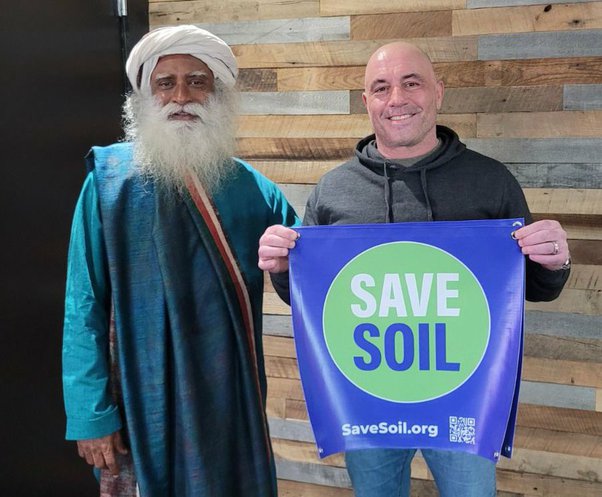March 16, 2021
If one of the real problems in the world is the erosion of topsoil due to excessive mechanical tilling, monocrop industrial farming, overgrazing and an overabundance of chemical fertilizers, some people think that simply allowing nature to do what it wants to do is the answer to soil fertility. And of course soil fertility is the future of our food security on the planet. The word for the destruction of our soil is called desertification. Desertification is when the living organisms in the soil no longer have a habitat and no longer provide the nutrients that plants need naturally.
One of the simplest ways to preserve the life of our land is by making sure that the groundwater is kept at a high level. When the topsoil begins to erode, it generally gets washed away when water flows down from the mountains at the end of the winter. To prevent excessive runoff, one method of enriching the groundwater is the digging of trenches that allow runoff water to pool. By doing this, groundwater tends to stay in one place and seeps into the surrounding land.
Once the ground water begins to pool, trees and cover crop are added to the downslope berm to hold the dam in place and also to promote growth in the soil. They say that one handful of fertile soil might have as many microorganisms living in it as people who have ever lived on the planet. And it is exactly this abundance of microorganisms that give soil it’s fertility.
One would think that this technique would be practiced globally but it’s not. If there is any reason for groundwater collection not being the norm it is for the same reason that guns do not require licenses in the United States and people are not allowed any sort of life that allows thoughtfulness. There is simply more money to be made in the chemical business and industrial farming equipment to do anything naturally. If a company can make money doing something antagonistic to nature, this is not a problem as long as there are profits.
I’ve been following the idea of permaculture planting for a while now and it seems that water harvesting has been a salvation in India and the Middle East and in Africa where droughts exacerbated by global warming and rising temperatures begin to cause great problems in communities. If there is no opportunity for people to grow food, this sets entire populations into migration causing endless problems, political instability and of course limitless hardship.
There might not be a more important theme for our future than food security. And local food security would be at the heart of that thought. Transportation of goods again might be relevant economically and be wonderful for the gas and oil business but none of this is good for our habitat or our lands. Literally, the economic world is almost demanding that people starve so as to be able to sell their products instead of local produce.
And this is just ridiculous.
Local food sources are fresher, seasonal, have lower transportation costs which means it has less of a carbon footprint then long distance transportation and it does more for local economies by allowing Farmers to do their job. Literally, it is the natural way of life and has been for hundreds of years and it is being stopped for the sake of corporate profits without regard to the eventual cost on local populations. Add to this the problems of global warming and you have a recipe for massive catastrophe on a global level.
I realize that making an essay about digging a ditch deep enough to catch groundwater runoff as it heads down a hill seems like a simple enough occupation. But the effect of naturally preserving the groundwater table and therefore stopping the erosion of topsoil might be the key to staving off massive catastrophe.
There’s only one future in the world. That’s the world where we are not hungry and we are not torturing each other from corporate and political greed. It’s also the one where we learn to work in harmony with nature rather than working against it because it makes us more money.









![What is a Permaculture Swale: Irrigate the Easy Way [+ Free Download] - Tenth Acre Farm](https://i0.wp.com/images.tenthacrefarm.com/wp-content/uploads/20220406133935/water-lens.jpeg?w=640&ssl=1)





